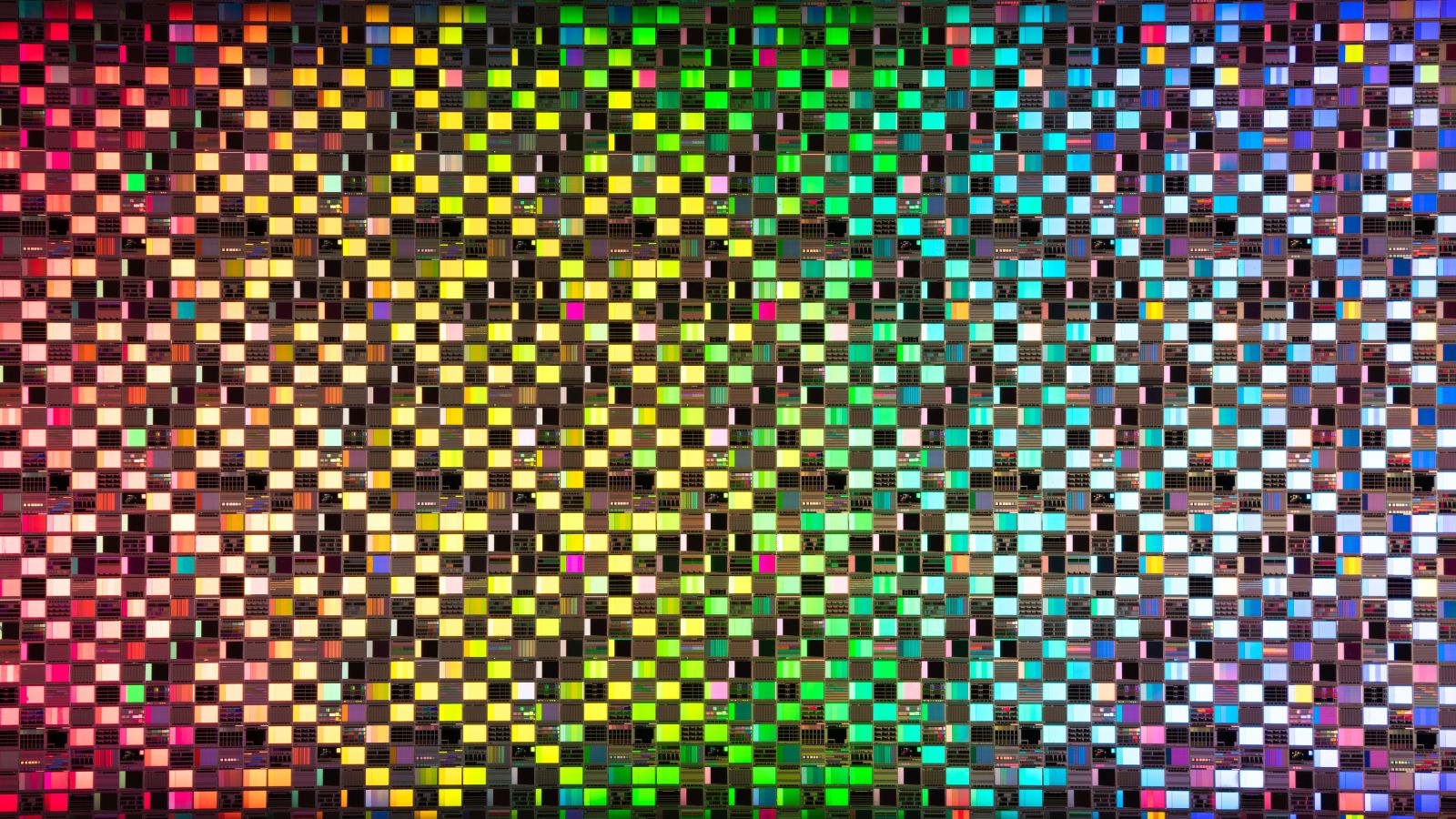A lab accident has led engineers to build a chip that fires a rainbow of powerful laser beams — and it could help data centers better manage skyrocketing volumes of artificial intelligence (AI) data.
The new photonics chip contains an industrial-grade laser source paired with a precisely engineered optical circuit that shapes and stabilizes the light before splitting it into multiple, evenly spaced colors.
You may like
Creating this rainbow effect — called a frequency comb — typically requires large and expensive lasers and amplifiers. However, the researchers stumbled on a way to pack this powerful photonics technology into a single, tiny chip when working on a way to improve lidar (light detection and ranging) technology.
Lidar uses laser pulses to measure distance based on the time it takes them to travel to an object and bounce back. While trying to produce more powerful lasers capable of capturing detailed data from further away, the team noticed the chip was splitting the light into multiple colors.
What is a frequency comb?
A frequency comb is a type of laser light made up of multiple colors or frequencies that are evenly spaced across the optical spectrum. When plotted on a spectrogram, these frequencies appear as spikes resembling the teeth of a comb.
The peak of each “tooth” represents a stable, precisely defined wavelength that can carry information independently of the others. Because the wavelengths are locked in both frequency and phase — meaning their peaks stay perfectly aligned — they don’t interfere with one another. This enables multiple data streams to travel in parallel through a single optical channel, such as a fiber-optic cable.
After stumbling on the effect by accident, the scientists then engineered a way to reproduce it intentionally and controllably. They also packed the technology into a silicon chip where light travels through waveguides mere micrometers wide; one micrometer (1 µm) is one-thousandth of a millimeter (0.0001 cm), or roughly one-hundredth the width of a human hair.
The team published their findings Oct. 7 in the journal Nature Photonics. The breakthrough is especially important now that AI is placing more and more resource strain on data center infrastructure, the researchers said.
“Data centers have created tremendous demand for powerful and efficient sources of light that contain many wavelengths,” study co-author Andres Gil-Molina, principal engineer at Xscape Photonics and a former researcher at Columbia Engineering, said in a statement.
You may like
“The technology we’ve developed takes a very powerful laser and turns it into dozens of clean, high-power channels on a chip. That means you can replace racks of individual lasers with one compact device, cutting cost, saving space and opening the door to much faster, more energy-efficient systems.”
Rainbow-on-a-chip
To create a frequency comb on a chip, the researchers needed to find a high-power laser that could be squeezed into a compact photonic circuit. They eventually settled on a multimode laser diode, which is widely used in medical devices and laser cutting tools.
Multimode laser diodes can produce powerful beams of laser light, but the beam is “messy,” meaning the researchers needed to figure out how to refine and stabilize the light to make it workable, the researchers said in the study.
They achieved this using a technique called self-injection locking, which involves integrating resonators into the chip that feed a small portion of the light back into the laser. This filters and stabilizes the light, resulting in a beam that’s both powerful and highly stable.
Once stabilized, the chip splits the laser beam into a multicolored frequency comb. The result is a small but efficient photonics device that combines the power of an industrial laser with the precision needed for data transmission and sensing applications, the scientists added.
Beyond data centers, the new chip could enable portable spectrometers, ultra-precise optical clocks, compact quantum devices and even advanced lidar systems.
“This is about bringing lab-grade light sources into real-world devices,” said Gil-Molina. “If you can make them powerful, efficient and small enough, you can put them almost anywhere.”
